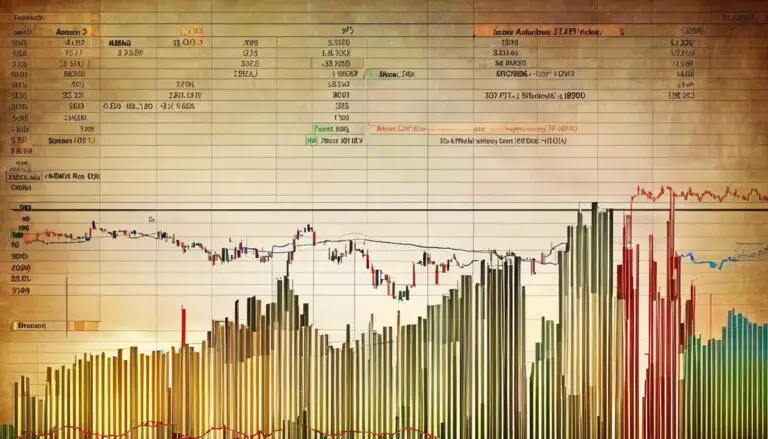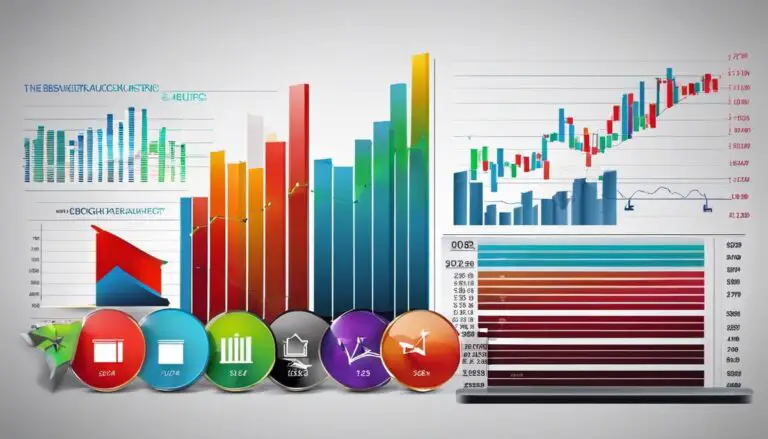Embarking on a journey into the world of trading can seem daunting at first, fraught with complex terms and high stakes. However, the advent of dummy trading accounts has provided a valuable resource for aspiring traders to hone their skills without the risk of losing real money. A well-chosen trading platform can simulate the pulse-racing thrill of real-world trading, offering a sandbox where strategies can be tested and instincts sharpened. Here, we’ll navigate the process of selecting a platform, comprehending the essentials of market operation, and the construction of a robust trading strategy, all within the safety of a virtual environment.
Choosing a Trading Platform
Choosing the Ultimate Platform for Your Dummy Trading Initiatives
When it comes to honing your trading skills without risking real capital, dummy trading platforms are indispensable. But in an ocean of options, how does one discern the platform that best suits their mock trading aspirations? Fear not, for navigating this landscape successfully is simply a matter of aligning feature-rich platforms with your unique trading needs.
Begin with a candid assessment of your trading style. Are you drawn to the rapid-fire world of day trading or the methodical analysis of long-term investments? Your style will determine your platform requirements – day traders need lightning-fast execution and real-time updates, while long-term traders benefit from in-depth analysis tools and historical data.
Leading the charge for real-time enthusiasts is Thinkorswim by TD Ameritrade. It’s more than a practice ground; it’s a battleground for strategies, with a plethora of charting tools, technical indicators, and the capability to simulate multiple strategies in markets that never sleep. Ideal for those gearing up for the high-stakes environment of day trading or options trading, Thinkorswim is your virtual trading dojo.
For the investor with an eye on the long game, MarketWatch’s Virtual Stock Exchange is a top contender. It permits users to create customized portfolios to track global markets and refine strategies over longer cycles. The platform’s integration with news streams also educates users on how geopolitical events and economic indicators can influence market movements—the perfect synergy for the strategic investor.
In the realm of startups, however, one must not overlook the sleek, game-inspired veteran – Wall Street Survivor. Balancing education with entertainment, it employs a gamified approach to trading. This platform is perfect for novices seeking an engaging learning experience without the terror of financial jeopardy.
Lest we forget the academic pathfinders, Investopedia’s Stock Simulator offers a congenial mix of virtual trading with educational content. With a robust trading simulator that is enhanced by its extensive dictionary of terms and in-depth articles, this platform is the thinking trader’s ally.
Contemplate, also, the connectivity. Your professional network could serve as a sounding board for strategies and simulated trades. A platform that boasts community features or integration with social media can turn solitary trading into a communal affair.
Every option discussed embodies the preeminent tool in its class, and your selection must reflect your individual trading blueprint. Whether you’re a maverick chart warrior or a contemplative financial philosopher, the perfect dummy trading platform is out there, poised to transform your virtual pennies into a fortress of knowledge and experience.
Choose wisely, for the chosen platform is not merely a simulator—it’s the progenitor of your trading acumen. It’s where the sophisticated entrepreneur of tomorrow forges their skills today. Happy trading.

Photo by glenncarstenspeters on Unsplash
Understanding Market Basics
Now, diving deeper into the intricacies of stock markets and their fundamental principles, one must understand that stock markets are the lifeblood of capitalism, providing a platform where companies can access capital and investors can share in their growth. Think of a stock market as the great financial coliseum where fortunes are made and lost, economies are judged, and where the mettle of companies is tested against the marketplace.
The stock market operates on the foundational framework of supply and demand. The valuation of a stock is closely tied to the perceived worth of the company, reflected through its financial performance and growth prospects. When more people want to buy a stock (demand) than sell it (supply), the price moves up. Conversely, when more people want to sell a stock than buy it, the price falls.
Liquidity is another cornerstone. Liquidity refers to the ease with which stocks are bought and sold without affecting their price. High liquidity indicates a thriving market with numerous transactions, providing investors the flexibility to enter and exit positions swiftly.
Diversification is a key principle to mitigate risk. It involves spreading investment across various sectors and asset classes to reduce the impact of any one underperforming security on the overall portfolio’s performance.
The role of market indexes like the S&P 500, Dow Jones Industrial Average, and NASDAQ Composite cannot be overstated. They provide a snapshot of market performance and are indicative of investor sentiment. Tracking these indexes allows one to gauge the health of the market sectors and the economy at large.
Market participants ranging from individual retail investors to large institutions must abide by regulations set forth by governing bodies such as the Securities and Exchange Commission (SEC) in the United States. These rules are there to maintain fair practices and protect investor interests.
Understanding market cycles is fundamental to capitalizing on the fluctuations inherent in the market. The savvy investor recognizes the patterns in these cycles, combining analytical tools and historical data to make informed decisions.
The stock market is not just a numbers game—it’s also psychological. Investor sentiment can be swayed by news, trends, and global events, adding a layer of complexity to market dynamics.
In conclusion, navigating the stock market requires a blend of knowledge, strategy, and an understanding of the forces at play. It’s a fascinating ecosystem that rewards those who learn its language and can dance to the rhythmic pulse of market trends. There’s no one-size-fits-all approach to success here; it demands dedication, intuition, and an unyielding commitment to continuous learning. The market beckons—step into the arena.

Developing a Trading Strategy
Fine-tuning Strategy Selection: Harnessing Technical Analysis and Fundamental Data
As we dive deeper into maximizing the efficacy of dummy trading practice, a pivotal strategy lies in cultivating a robust understanding of both technical analysis and fundamental analysis. In traders’ parlance, these are akin to the compass and map guiding one through the tumultuous financial landscapes.
Technical analysis, with its charts and indicators, offers foresight into market movement patterns. To maximize dummy trading effectiveness, traders must familiarize themselves with a variety of technical tools—moving averages for trend recognition, RSI for identifying overbought or oversold conditions, and Fibonacci retracements for pinpointing support and resistance levels. By backtesting these analytical tools in simulated scenarios, traders develop sharp intuition on their practical application.
Conversely, fundamental analysis dissects the financial health and viability of business entities. Scrutinize earnings reports, balance sheets, and income statements. Absorb the economic indicators and news events that sway sectors and markets globally. Practice conducting SWOT analyses to determine a company’s competitive edge within dummy trades. Translating such deep dives into simulated trade decisions yields a refined grasp of market dynamics.
Leveraging Real-time News and Events
Remaining adept at integrating real-time news into dummy trading practice is nothing short of critical. The seasoned trader’s eyes are perennially peeled for economic calendars, earnings announcements, and geopolitical events—the catalysts for market volatility. Hone the skill to swiftly assimilate this influx of information, assess implications on asset classes, and translate insights into actionable trading strategies within your dummy platform.
Embracing Risk Management Techniques
The discerning trader knows that a castle built on sand can hardly withstand the tide. Risk management is that bedrock upon which enduring trading success is secured. In your dummy trading sojourn, employ stop-loss orders to minimize losses and take-profit orders to lock in gains—a discipline that, when actualized in real-world trading, stands between thriving fortunes and cataclysmic setbacks.
Furthermore, apply position sizing judiciously; never overexpose your portfolio to a single trade. Test varying allocation percentages to discern the sweet spot that balances reward and risk.
Dynamic Portfolio Adjustment: Learning from Outcomes
Within your trading practice lies the golden opportunity to iterate—each outcome serves as a feedback loop. Analyze both successful and lackluster trades with equal fervor, allowing the insights gleaned to refine your approach. Was your market entry timing impeccable? Did your stop-loss position safeguard you from unforeseen market downturns? Implement these learnings to methodically elevate your trading acumen.
Cultivating Emotional Equanimity
Lastly, amidst the analytical rigor, a trader’s psychological fortitude is an undeniable asset. Train your emotional resilience within the confines of dummy trading, where the stakes are educational, not financial. Here, embrace the freedom to experiment, stumble, and, indeed, to fail. Foster patience, curb impulsive decisions, and solidify a temperament that is impervious to the whims of market emotion—an attribute that will stand as an unwavering pillar when transiting to actualized market participation.
In synthesizing these strategies—unearthing the potential of technical and fundamental analysis, staying attuned to live news, implementing ironclad risk management, learning from each engagement, and cultivating emotional steadfastness—your dummy trading crusade is poised to morph into a real-world trading triumph.

Having ventured through the intricacies of dummy trading accounts, from the meticulous selection of a trading platform to the strategic maneuvers within virtual markets, one emerges more prepared and confident. This practice arena affords invaluable experience, allowing individuals to learn from mistakes and triumphs alike while preserving capital. As you transition from simulated trades to real market challenges, carry forward the wisdom and insights gleaned from your virtual expeditions, ready to engage the financial markets with a fortified arsenal of knowledge and experience.



